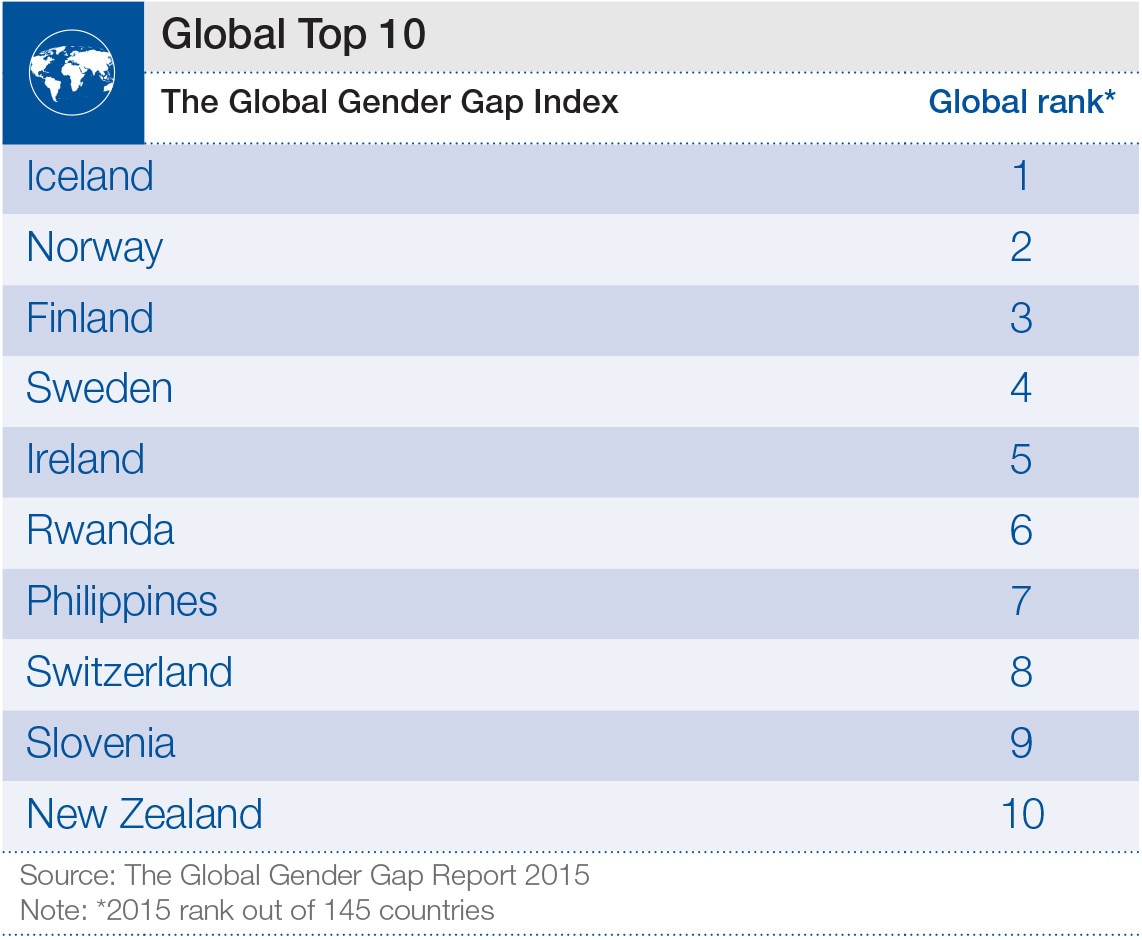The 10 countries where it's toughest to be born a girl

Niger: the worst place to be born a girl Image: REUTERS/Luc Gnago

Get involved with our crowdsourced digital platform to deliver impact at scale
Stay up to date:
Gender Inequality
There has never been a better time in history to be born a woman, according to US presidential nominee Hillary Clinton. She’s not wrong: the cause of gender equality has made remarkable progress in recent years.
But while we’re right to celebrate this, the simple fact remains that nowhere on earth do women have the same opportunities as men. In fact, the latest Gender Gap Report suggests it could take as many as 81 years to close the worldwide gender gap.
Some countries are making progress faster than others. Most of the Nordic nations, for example, have closed more than 80% of the gender gap.

Others are trailing far behind. “In too many countries, being born poor and female means a life sentence of inequality, oppression and poverty,” the ONE Campaign noted in its latest Poverty is Sexist report.
The same report attempted to establish where it is toughest to be born a girl. So which countries made the list?
A word first on methodology. It’s complicated enough trying to measure and index something relatively straightforward like GDP – data might be missing, false, or simply reported in different ways, making it difficult to draw comparisons.
But it’s even harder when the thing you’re trying to capture is this complex. After all, a whole host of factors – both legal and cultural – determine the challenges girls encounter.
To overcome these limitations, the index looks at everything from health, to education, to economic opportunities, tracking measures as varied as anemia rates among women and the number of years a girl attends school.
While far from definitive, it provides a broad look at the hurdles girls can face, how these compare to boys born in the same places, and how much work some countries have to go to eliminate gender gaps.
Few will be surprised to hear that the toughest places to be born a girl are also some of the poorest countries on the planet: 9 of the 10 appear on the UN’s least developed countries list, and 9 of 10 are considered by the World Bank to be fragile states.

In Niger, the worst country to be born a girl according to the ONE analysis, maternal mortality rates stand at 630 per 100,000 live births – compared to around 5 per 100,000 in most Nordic countries.
While boys born in Niger can expect to receive on average 6.1 years of education – still very low – girls get just 4.8. When it comes to the world of work, male labour force participation rates stand at almost 90%, compared to 40% for women. And in the political sphere, women hold only 13% of seats in parliament.
While poverty might be a common feature of all the countries in the ONE index of worst places to be born a girl, some places manage to buck this trend. Take Rwanda, which is also considered to be a least developed country. In the full list of countries profiled by ONE, it managed to finish well ahead of wealthier nations like Jordan, Nigeria and Morocco.
In fact, the latest Global Gender Gap report placed Rwanda ahead of even the United States in gender equality, showing what’s possible when a country makes a conscious effort to ensure both girls and boys receive the same opportunities in life.
Have you read?
Don't miss any update on this topic
Create a free account and access your personalized content collection with our latest publications and analyses.
License and Republishing
World Economic Forum articles may be republished in accordance with the Creative Commons Attribution-NonCommercial-NoDerivatives 4.0 International Public License, and in accordance with our Terms of Use.
The views expressed in this article are those of the author alone and not the World Economic Forum.
The Agenda Weekly
A weekly update of the most important issues driving the global agenda
You can unsubscribe at any time using the link in our emails. For more details, review our privacy policy.
More on Gender InequalitySee all
Claude Dyer and Vidhi Bhatia
April 18, 2024
Morgan Camp
April 9, 2024
Rida Tahir
April 9, 2024
Andrea Willige
April 8, 2024
Gilles Roucolle and Sumati Sharma
April 5, 2024






